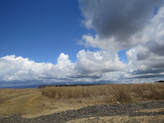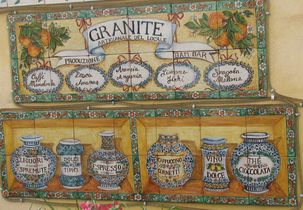 The Scripture readings at the end of the liturgical year convey a sense of urgency, one that might feel a bit unwelcomed when the secular world takes on a pressurized atmosphere as well. We need to make a distinction between the two, however. In the secular world there is a sense of rushing to be prepared for holidays ushered in earlier each year with a dizzying array of demands, hence ‘upping the ante’ on the urgency of being ready. No matter what we do the holiday season can encroach upon our peace in what feels like an attempt to crush us rather than being a time of enjoyment. Though it is easy to be pulled into the tide of menus, music, gifts, and the exterior trappings, we do these things mostly because we truly want to be merry and we want to be welcoming. We endure the pressure, often rationalizing that it only happens once a year. In contrast, the urgency of the liturgical year is about making sure our spiritual household is in order, being prepared for the Lord to come “at a moment you do not expect,” so that we might greet Him with joy. The good news, however, is that the two attitudes do not have to be mutually exclusive. It is important to take the time for gratitude at Thanksgiving and for generosity during Advent and Christmas, but it is also important to keep it in perspective: it is about living the Christian life as disciples, being prepared for the coming of the Lord at whatever time He returns, thereby putting Him first in our lives. We are looking into the light of eternity, which is why at the completion of the liturgical year we focus on the end of time and the coming of Christ the King. And that is what all of this is really all about. 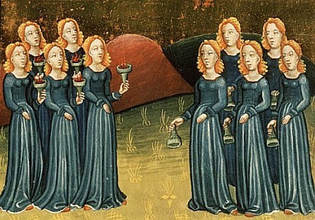 The point we often miss is that the end of the liturgical year and the beginning of the next is less about urgency and more about wisdom: if we learn to see and hear, to be alert to the things of God, we will indeed be prepared for His coming. Being prepared, in other words, is the wise thing to do. On the 32nd Sunday of the year we heard the parable of the wise and foolish virgins. (Matthew 25:1-13) At first glance it seems unfair that the virgins labeled as wise do not share their oil with those labeled as foolish when the Bridegroom finally arrives. Throughout our entire lives we are taught to share, (and perhaps can even pick out some Bible verses about the virtue of sharing), and here Jesus tells us that the wise ones were right not to share? What gives? That is because this parable is not about the virtue of generosity; it is about wisdom. Those called wise lived their entire lives in a state of readiness for this moment by offering "a ray from heaven”* to others, doing all the good things which we are taught by Jesus, such as mercy, kindness, love, and yes, generosity. Therefore when the moment came for the Bridegroom’s arrival, they could not give the ‘produce of their good deeds’ to the ones who squandered opportunities for growth and perhaps lived a bit selfishly. We can share lots of things, but we cannot give to another person the result of what we have gained spiritually through a lifetime of holiness; we can only grow within our own hearts and souls. Hence the wise virgins could not give away some of their holiness, (wisdom), since that is impossible. We each have to do this for ourselves and perhaps that is why there is an air of urgency. Holiness cannot be subdivided, bought or sold, but rather it is attained by a combination of our own efforts at love and the power of the Holy Spirit as gift. 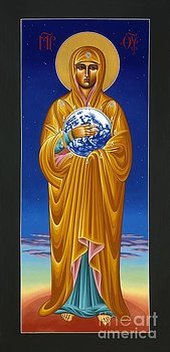 Wisdom, therefore, is learning to discern, to see and hear through the inspiration of the Holy Spirit. Rather than waiting until the eleventh hour and risking what happened to the foolish virgins, we are urged to do the work of growing in holiness through prayer and deeds throughout our lives so that no matter when the Lord returns for us, we are ready. The vision we learn is to discern the hand of God offering opportunities for goodness; it is to acknowledge that He is with us in protection, comfort, and mercy; it is to see His glory expressed as in "a ray from heaven.” An example of this is in the inspiration received by an artist. A painter of sacred art, for example – (though this can be true for all artists in any medium) – sees something of the divine in a type of vision, an inspiration. This is not necessarily a vision such as an apparition, though in some ways to the painter it is. The painter sees beauty where others may not and therefore desires to express it on canvas. He or she can never truly recreate the vision, but attempts to convey the essence of the immense beauty or the symbolism contained in what was experienced. This is a process in which we participate; it begins with a gift from God, but in order to allow the inspiration to take hold, we, as also the artist, have to take the time to grow in discernment through our prayer and works, and hence to grow in wisdom. 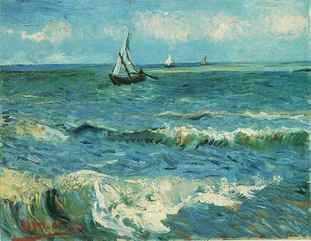 Sometimes this vision is needed as a return to wholeness, especially when we have experienced a debilitating wound or have suffered a loss. In one of his letters Vincent van Gogh beautifully expressed this: “How good it is to walk along an empty beach and look at the gray-green sea with its long, white streaks of waves when you are feeling depressed. But if you have a need for something great, something infinite, something in which you can see God, you don’t have to look far: I think I have seen something deeper, more infinite, more eternal than an ocean, expressed in the eyes of an infant when it wakes in the morning and crows with pleasure, or laughs because it can see the sun shine in its cradle. If there is a rayon d’en haut, a ‘ray from heaven,’ perhaps it can be found there.”* This is the same vision as the artist who has learned to express the divine, and of the wise virgin who has learned through trial, error, and the desire for holiness to recognize and pursue wisdom so as to be ready when the Bridegroom arrives and ushers in eternity. 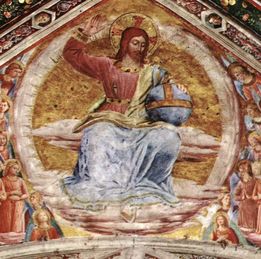 On the last Sunday of the liturgical year we celebrate the Solemnity of Our Lord Jesus Christ, King of the Universe. It is not by accident that we end one liturgical year and begin the next (the season of Advent) by preparing for His coming. The message is loud and clear: we must always be preparing for the coming of Jesus our King! Therefore, we learn that it is wisdom to have oil in our lamps, to keep our talents at hand, not buried as if underground, and to live our lives doing works of mercy. (Matthew 25) It is wisdom to offer kindness, generosity, mercy, forgiveness and love to our families and friends in gratitude for their presence in our lives expressed in a meal on Thanksgiving or in gift-giving at Christmas. But it is also wisdom to offer those same things to our other neighbors: the stranger, the alien, the widow, the orphan, the poor, and the marginalized. It is wisdom to prepare for Christmas, but without forgetting Advent, which is the preparation time when we listen intently to our own hearts and the hearts of others so that we recognize Christ when He arrives. Yes, we make merry and enjoy this once-a-year time to express love for our families and friends; we enjoy the music, shiny lights, decorations, and gatherings as a sign of gratitude and joy in His eventual coming, but we keep in perspective that the urgency is a longing for Him, not to be displaced by a despair for the lack of time or means, and to only emphasize the externals. At a time when so many are realizing that material things are fleeting we need to help our neighbors to find something greater in our continued love and care for them. It is in being prepared, in our expanded vision to see the presence of the Lord and to welcome Him into our own hearts, that we can help those who are in need, thus enabling them to see the presence of Jesus surrounding them with generosity and care as well. Therefore let us become that ray from heaven for those near to our hearts as well as to those who are “friends not yet met” by sharing the fruits of our preparedness as witness to the coming of Christ the King into the world. 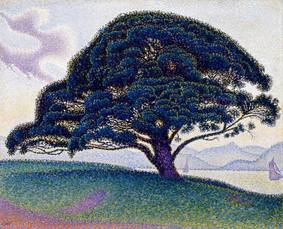 May we become as rays from heaven to those who are in need or who are searching for God! May we obtain wisdom as we seek to grow in holiness through our prayer and through acts of love and mercy! May we seek Jesus our King, both in working to be prepared for His coming in the ‘disguise’ of the stranger, as well as in glory at the end of time! May we find peace and joy in the coming weeks, rather than to allow it to become displaced by frenzied activity! May the mourning and those who find the holidays burdensome be comforted, and may we also recognize the loving hand of God in the outstretched hand of those who care! And may we prepare a place for Christ the King at our tables this Thanksgiving as we share the bounty of the gifts we have received, those seen and unseen! Peace! ©Michele L. Catanese * The phrase 'a ray from heaven' and the entire quote come from a letter written by Vincent van Gogh to his brother Theo in 1882. The letter is found in Van Gogh's Letters: The Mind of the Artist in Paintings, Drawings, and Words, 1875-1890, edited by H. Anna Suh; page 69. Note: The next post will be on December 4. Images: 1. This is one of my photos taken in Taormina, Sicily, Italy, a decorative sign on the wall outside a granita shop. Granita is a type of ice, not gelato, but more of a Sicilian version of what some call Italian ice. It is very tasty and refreshing. This shop had other sweets, (dolci), espresso, and the like. These tiles are typical of ceramic work done by Sicilian artisans and are found all over the island. I chose this photo because it depicts a place of many delicious treats, reminding me of my childhood: my Sicilian relatives would come with baked goods which only were indulged in during the holidays. To find out more on granita click here: https://en.wikipedia.org/wiki/Granita 2. This is a painting of the wise and foolish virgins,(of unknown origin.) I like it because of its simplicity, but also because it depicts the separation of the virgins: the wise with their lamps burning are on one side and the foolish with their empty lamps are on the other. This is in keeping with the final teaching in the chapter where this parable is found (Matthew 25) in which Jesus spoke of the separation of the righteous on his right like sheep and the selfish on his left like goats. 3. This is an icon called Mary Most Holy Mother of All Nations by Fr. William Hart McNichols. I chose to use it here because it is the most beautiful icon I have ever seen. Keep in mind that taste is subjective and what moves one may not move another. However, I also chose it because this is a fabulous example of what I was describing: an inspired response to a vision, if you will. I say this because an icon is the result of a religious experience; all iconographers pray intensely over the work they do. You can purchase a copy of this icon in one of many different formats at http://frbillmcnichols-sacredimages.com/featured/mary-most-holy-mother-of-all-nations-080-william-hart-mcnichols.html. If you want to order some other cards or gifts, you can check out his entire website at http://frbillmcnichols-sacredimages.com/ (Remember, I gain nothing from making this suggestion except the joy of sharing the work of Fr. Bill.) 4. This painting is also the response to a vision, as it were. This painting is called Seascape near Saintes-Maries-de-la-Mer by Vincent van Gogh. (1888) I chose it for this place in the blog as a reference to the quote which was written in a letter four years prior to this painting, but the painting is nonetheless appropriate. I grew up by the water and therefore I can understand how the beauty of the sea can evoke a sense of the infinite and therefore, of God. 5. This is a painting of Christ the King by Blessed Fra Angelico. I chose it because I love how Jesus is looking intently at the world, depicted as the globe, with His hand raised over it. I like to think He is blessing the world, but it is quite possible this is a scene of judgment in which He might be ready to separate the sheep from the goats. But do not forget that with judgment also comes mercy. Thank God! 6. This is a brilliant painting called The Bonaventure Pine by the artist Paul Signac. (1893) It is painted in a style called 'pointillism.' The technique is the usage of dots of color (the paint used here is oil) to construct the larger image. If you enlarge the painting, you can see the individual dots which work amazingly to create and define all the subjects being depicted in the foreground and the background. There are no brushstrokes, only dots of color. I chose it because it reminded me of the discernment needed, the closer look involved to grow in wisdom. The wise (spiritually) are able to connect the dots, so to speak, to see both the individual as well as the collective picture. Here are two wonderful explanations of this painting if you are interested: http://ezinearticles.com/?His-Most-Famous-Painting-(The-Bonaventure-Pine-in-St-Tropez)---Paul-Signac&id=2785874ezinearticles.com/?His-Most-Famous-Painting-(The-Bonaventure-Pine-in-St-Tropez)---Paul-Signac&id=2785874 and https://explorehoustonwithpeggy.com/bonaventure-paul-signac-pointillism/  Last month my husband and I decided to take a weekend trip to a favorite hiking site which also meant we would be attending Mass at a church which is not our usual parish. Before Mass everyone was asked to greet the people sitting around them. The couple next to us gave a warm greeting, a welcome which was genuine and deeply touching, as did the couple seated behind us. After Mass the first couple continued to demonstrate hospitality, saying they hoped to see us again sometime in the future. This kind of welcome seems to be in their spiritual DNA, because every time we visit the area and subsequently attend that parish, we feel at home knowing that we do indeed belong. And that is how it should always be when one enters a church to worship. There is nothing more intimate than praying together, so the welcome should be palpable. What I took away from the experience was that I was surrounded by friends I simply had not yet met, and that in any Christian community all people should be welcomed at all times. Being surrounded by these caring people also helped me to look beyond and to realize that we are continually surrounded not only by the living, (and not only by the angels), but also by the souls of the dead. 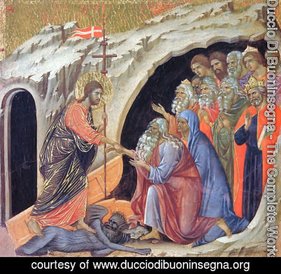 We celebrated the ‘sister feasts’ of All Saints and All Souls on November 1st and 2nd respectively, and therefore it is important to understand that combined, these feasts are meant to remind us that we are not alone by any means. In the first, “The Solemnity of All Saints,” we are celebrating not only those who rose to their full spiritual potential in becoming holy, (the recognized Saints) but also those who are unknown to us, and are already in Heaven. This feast reminds us that the Saints do not attain heaven and then ‘wait around’ for us to accompany them someday. Rather, they accompany us now, working to help when we specifically ask for their intercession. The second, “The Commemoration of All the Faithful Departed” (All Souls Day), is a remembrance of all those who have died and who are completing their “purification preparation” in Purgatory so that they may then enter into Heaven.* We are taught that we have a responsibility to pray for them so that they may complete their purification, but we also believe that they pray for us, too. (2 Maccabees 12:44-46 as well as other references.)** This is why we should think of these two feasts as related to one another: both remind us that we are not alone in this life and that one day we will be welcomed into Heaven by the souls who have gone before us. 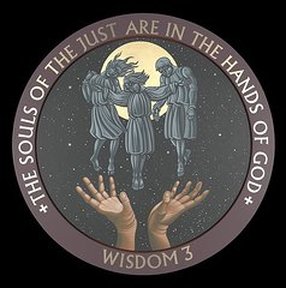 St. Paul wrote: “You are no longer strangers and sojourners, but you are fellow citizens with the holy ones and members of the household of God, built upon the foundation of the apostles and prophets with Christ Jesus himself as the capstone.” (Ephesians 2:19-20) We are bound together through love at our baptism, a connection offered by the Holy Spirit and attained for us by Jesus. Thus, as members of one Body there are no strangers. We are related through grace, as Paul says, in the household ('family') of God. We are surrounded not only by the friends and family we can see, but by multitudes of the unseen saints and holy souls, including our departed loved ones who are not truly lost to us, but are indeed present. We are always enfolded in Love; not only do we have the limitless love of Christ, but we have these unseen friends who are always present. We are never alone, even when we think we are. This is quite important for us to bear in mind especially because part of our human condition is that sometimes we feel disconnected, particularly in periods of crisis, illness, loss, betrayal, disappointment, or simply a ‘low time’ in our life journey. We can feel so alone that we lose sight of the reality that we are not. Those suffering poverty or homelessness, those who might be refugees who also might have a language barrier to contend with, the elderly, those who live alone, those suffering loss of a loved one, and those who might be displaced due to natural disaster, are most vulnerable to feeling isolated. Loneliness is also felt keenly when we are somehow labeled as ‘different’ or ‘judged and found wanting’ in the eyes of others and therefore are held at a distance. Those who are treated as unwelcomed for any reason feel like a sojourner in a foreign land, even in their own ‘backyard.’ When these things occur it is quite easy to feel adrift, unwelcomed, and truly uncared for, thus losing sight of the unseen reality of the presence of the saints, holy souls, and of course, our loving God. 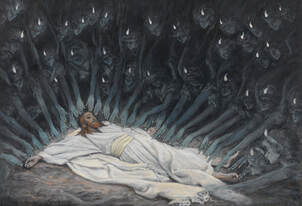 It might help to remember that even Jesus, who was fully human as well as fully divine, was not impervious to being tempted to give into loneliness. When He went out into the desert to pray in preparation for His public ministry, (Mark 1:12-13; Matthew 4:1-11, Luke 4:1-13), He was tempted by the devil, which in part can be seen as the allure of assuaging His loneliness. First, Satan tried to get Jesus to act upon his command to ‘prove’ that He was really God; but this was also a temptation to ward off loneliness because the devil suggested that Jesus could summon the angels, and thus He would not be alone in this battle. Next, Satan offered Jesus food, perhaps to falsely appease His hunger for souls to be saved. Ironically Satan offered bread that would cease to satisfy to the very One whose Body would become the bread which never ceases to satisfy. Finally, Satan offered to give Jesus all the kingdoms of the world, seemingly a place to ‘fit in’ (a false security), if He would worship Satan, to which Jesus commanded Satan to be gone. In the end the angels did come to lovingly minister to an exhausted Jesus, who like all of us, was in fact never alone. 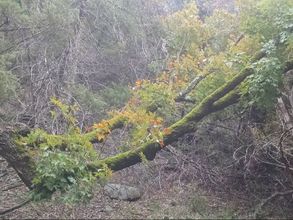 The dual feasts of All Saints and All Souls help us to remember that in addition to the angels, the saints and holy souls do accompany us and are always available when we need assistance; we should never fear to ask their help when we are somehow in need. Quite often we will pray to a patron (saint) or a particular saint on his or her feast day, but we forget that all year long we have an entire army of helpers who want to share the joys of the Kingdom with us. We may remember our beloved dead throughout the year, but often we forget to pray to them, not just for them. Indeed they appreciate our prayers for them, probably more than we can know in this life, but they also want to be of assistance to us. They are no longer bound by time and space, so they are able to pray unceasingly for us. In short, the holy souls and the saints are fabulous intercessors who keep the prayer going for us when we are either distracted or are called to move away from prayer and attend to the responsibilities of our lives.  These feasts also help us move outward in action. The holy souls and the saints assist us, but they are not meant to do all the work. Jesus taught that every man and woman is our neighbor, and therefore we are called to work together to heal that which is broken and build up that which is sagging. In other words, these feasts should provide inspiration to imitate the holy souls and the saints by offering a welcome to the stranger and our friendship to the lonely or alienated. Jesus came into the world to bring healing to the sick and to bring home all those who were disconnected from God. In the last discourse in Matthew 25 Jesus taught that we have a responsibility to help those in need: we are to feed the hungry, clothe the naked, visit those who are ill or in prison, and welcome the stranger. Just as our unseen friends, the saints and holy souls, work in the background to assist us, we are to reach out to our wounded neighbors to show mercy and love, too. We might remain equally unseen in doing this work, a greater sacrifice since we receive no recognition, but part of being a Christian is to make these actions so much a part of our lives that we do not even think of them as something different or heroic. It is simply what we do because it is who we are. Therefore we need to imitate the holy ones who have gone before us, welcoming the friends we have not yet met, that we might be instruments of healing and wholeness.  May the Saints and Holy Souls inspire us to work toward fulfilling our potential to holiness! May we trust in our prayer to the Saints and Holy Souls knowing they are always attentive to us! May we learn to gratefully welcome the assistance of the Saints and Holy Souls and to be welcoming to all those who offer aid when we are in need! May we learn to be as the unseen Saints and Holy Souls, offering assistance to neighbors who might need our help! And may we live the gospel message of Jesus in grateful response to His love, as instruments of the same mercy He offers us! Let us continue to meet in the Heart of Jesus! Peace! ©Michele L. Catanese Note: Next post will be November 20. * This is a reference to an explanation of All Souls Day found in the November issue of Magnificat on page 34. ** I referenced the following article http://www.catholic.org/saints/allsouls/. The author generally points out other biblical references found in Zechariah, Sirach, and the Gospel of Matthew. However, be forewarned that the references in 2 Maccabees are misstated in the body of this article. The author cited 2 Macc 12:26 and 32, but that is totally incorrect. It should read 2 Macc 12:44-46. More resources are: All Saints: http://www.catholic.org/saints/allsaints/ All Souls: https://www.thoughtco.com/what-is-all-souls-day-542460 Images: 1. I took this photo on the hiking trip mentioned at Garner State Park in Concan, Texas. It was an overcast day and we were hiking near the river on an ill-defined trail, which was so because the park had suffered from flash flooding a year ago and the trail had not been fully "rehabilitated." I chose to use this here not only because it was part of the hiking trip but because of the clarity of the water. Being able to see the bottom of the river and everything in it at that point reminded me of the unseen becoming visible to us through prayer. 2. This is a painting by Duccio di Buoninsegna, one of my favorite religious artists. It is The Descent to Hell (1308-11). It depicts the descent of Jesus into Sheol after He died on the cross, referred to in the Apostles' Creed: "He descended into hell and on the third day He rose again from the dead...." There is also a reference in Matthew 27:52-53 to the souls of the just seen in Jerusalem after Jesus died. I chose to use it here because it shows the holy souls being released to rise into Heaven as new saints. 3. This is an image painted by Fr. William Hart McNichols called The Souls of the Just Are in the Hands of God. I chose to use it here because it references Wisdom 3:1-9 which contains the lovely passage often used at funerals that describes the loving care God gives to the souls who pass from this life through death to new life. There is a gentleness in the way the rising holy souls are seen. If you are interested in purchasing this image in one of many formats you can find it at https://fineartamerica.com/featured/the-souls-of-the-just-are-in-the-hands-of-god-172-william-hart-mcnichols.html. 4. This image is incredibly moving and it was the inspiration for this entire post: it is a magnificent painting by James Tissot called And the Angels Ministered to Him. (1898) It shows Jesus right after the temptations by the devil have ended and the angels surround Him with their love and care. When I reflect upon this image it helps me to realize that the holy ones and the angels are surrounding each of us whenever we are in danger or in need even though they remain unseen. No matter what happens they are there to assist us. They do not alter the outcome of a situation, but they remain with us throughout to comfort and pray. 5. This is one of my photos taken at Lost Maples State Natural Area in Vanderpool, TX. I chose to use it here because the moss on the dead branch seemed to be enveloping it with a vibrancy that spoke to me of the life which surrounds us when we are feeling a bit lifeless due to loneliness or suffering. 6. This is The Good Samaritan by Vincent van Gogh. I chose to use it here because the Samaritan is carrying out the corporal works of mercy by helping the wounded Jew. There is a welcome in this action because the Samaritan is helping one who would be an enemy; at that time these two cultures were enemies of one another, therefore his heroic act is transcending the culture and doing what we all should do, which is to love our neighbor no matter who he or she might be. 7. Finally, this is another of my photos taken on our hike at Lost Maples. I chose this because the water droplets on the fern are very tiny and could have gone unnoticed. The water was clinging to the fern's leaves when I snapped the photo and later when we made the return trip it was still there just as it had been previously. This made me think of the gentle presence of our beloved dead, the holy souls and the saints, who are ever present almost tenaciously. That is a very comforting thought. |
Heart Speaks to Heart
|

 RSS Feed
RSS Feed
